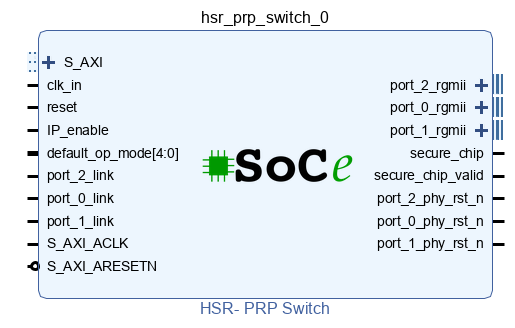Our HSR-PRP Switch and Managed Redundant Switch IP Cores are constantly evolving! As the last 4th edition of the standard was published in December 2021, we have continued upgrading our IPs and supporting new functionalities. This fourth edition cancels and replaces the third edition published in 2016. This edition constitutes a technical revision.
This new post will cover a brief introduction of the Edition 4 Standard as well as the latest changes of our HSR-PRP Switch and MRS IP Cores, which will include RSTP Support in HSR (Mode R) and the change of supervision messages as defined in IEC 62439-3:2021 © IEC 2021
RSTP support in HSR (Mode R)
As specified in this fourth edition, a DANH shall be operable in one of the following modes, which shall be changeable at runtime using management commands: Mode H, M, N, R, T, U and X.
Regarding the Mode H, this one is mandatory, as it’s the default one. In this mode, the DANH shall insert the HSR tag on behalf of its host and shall forward the ring traffic, except for frames sent by the node itself, duplicate frames and frames for which the node is the unique destination. This is the intended operating mode of a DANH.

HSR-PRP Switch IP Core
In relation to the Mode R, this is an optional mode for RedBoxes. In this mode, the Redbox is able to receive BPDUs, encapsulate them and to decapsulate them when connected to an RSTP bridge. In that sense, our IP Cores supports the connection of a RSTP LAN to an HSR rign according to the Mode R. This mechanism lets the RedBoxes exchange the BPDUs that they receive from their RSTP bridge to allow the bridges to detect their topology through the HSR ring.
Brief introduction to the latest HSR-PRP Edition 4 (2021)
Concerning additional changes in this new edition, the changes are as follows:
- References to Precision Time Protocol (PTP) IEC 61588:2021 replace references to IEC 61588:2009.
- RedBoxes and QuadBoxes specifications are extended to TCs
- PTP over PRP specifies a unified operation of DATC and SLTC RedBoxes.
- PTP industry profile is extended.
- Sync messages padding to support media converters.
- RSTP support in HSR.
This is just a brief overview of the latest edition, as this new 4th edition has introduced significant technical changes with respect to the previous edition.
